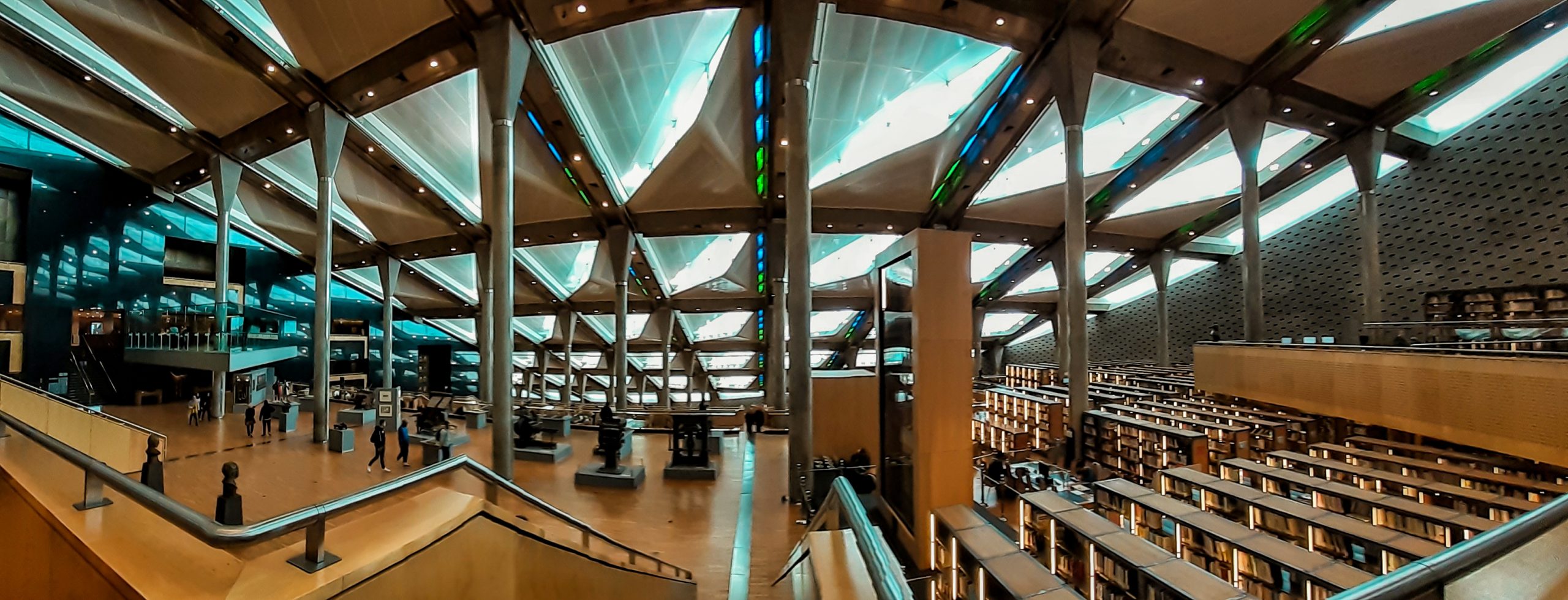Overview
Introduction to the Alexandria Library
The Alexandria Library, also known as the Royal Library of Alexandria, was an ancient institution of immense historical significance. Built in the 3rd century BCE, it stood as a testament to the intellectual curiosity and pursuit of knowledge of the ancient world. The library was not only a repository of books and manuscripts but also a center for scholarly activities, attracting renowned scholars, philosophers, and scientists from all corners of the known world. It was a place where tales from the crypt of human civilization were brought to light, where ancient texts and ideas were preserved, studied, and shared.
Historical Significance
The Alexandria Library, also known as the Great Library of Alexandria, holds immense historical significance. It was established in the 3rd century BCE and served as a center of knowledge and learning in the ancient world. The library housed a vast collection of manuscripts, including works of renowned scholars and philosophers. It attracted scholars from all over the world, making it a hub of intellectual exchange and innovation. Unfortunately, the library met a tragic fate and was destroyed, resulting in the loss of countless valuable texts and knowledge.
The Destruction and Loss of Knowledge
The Alexandria Library was not only a center of knowledge but also a treasure trove of invaluable artifacts. Unfortunately, it suffered from several devastating events throughout history, including the most tragic artifact thefts. These thefts resulted in the loss of numerous precious manuscripts and irreplaceable works of art. The perpetrators of these crimes were driven by greed and a disregard for the cultural and historical significance of the library’s collection. The loss of these artifacts represents a significant blow to our understanding of ancient civilizations and their contributions to human knowledge. It serves as a reminder of the importance of preserving and protecting our cultural heritage.
Architectural Marvels of the Library

Design and Construction
The design and construction of the Alexandria Library was a remarkable feat of engineering and architecture. The architects of the library envisioned a grand structure that would not only house a vast collection of knowledge but also serve as a symbol of intellectual prowess and cultural significance. The library was built using the finest materials available at the time, including marble, limestone, and granite. The construction process involved intricate planning and precise execution, with skilled craftsmen and laborers working tirelessly to bring the vision to life. The result was a magnificent building with impressive dimensions and intricate details. The library’s design incorporated elements of Greek and Egyptian architecture, blending the two styles seamlessly to create a unique and harmonious aesthetic. The grandeur of the library’s design and construction was a testament to the importance placed on knowledge and learning in ancient Alexandria.
Layout and Organization
The layout and organization of the Alexandria Library was a masterpiece of architectural design. The library was divided into different sections, each dedicated to a specific field of knowledge. The main reading room, known as the Bibliotheca Alexandrina, was a grand hall with impressive columns and a high ceiling that created a sense of grandeur. The shelves were meticulously organized to house the vast collection of manuscripts and scrolls. The librarians employed a sophisticated cataloging system to ensure easy access to the materials. The library also featured study rooms and lecture halls where scholars could engage in intellectual discussions and lectures. One of the notable features of the library was the clever incorporation of interchangeable heads in Roman sculptures, which showcased the blending of different cultures and artistic styles. The architectural marvels of the Alexandria Library were not only functional but also aesthetically pleasing, creating an environment conducive to learning and intellectual exploration.
Features and Amenities
The Alexandria Library was not only a repository of knowledge but also a center of intellectual and cultural activities. It boasted several features and amenities that made it a truly remarkable institution. The library had multiple reading rooms, each dedicated to a specific subject, providing scholars with a conducive environment for study and research. It also had lecture halls where renowned scholars would deliver lectures on various topics, fostering intellectual discourse and exchange of ideas. The library’s collection was organized in a cataloged and classified manner, making it easy for scholars to locate specific manuscripts. Additionally, the library had a well-equipped laboratory for preservation techniques, ensuring the longevity of the precious manuscripts. The amenities offered by the library included a cafeteria where scholars could take breaks and discuss their findings, as well as a garden where they could find solace and inspiration. The Alexandria Library truly embodied the spirit of knowledge and provided a nurturing environment for intellectual pursuits.
Collection and Preservation of Knowledge

Acquisition of Manuscripts
The acquisition of manuscripts was a crucial aspect of the Alexandria Library’s mission to gather and preserve knowledge from across the ancient world. Scholars and librarians tirelessly sought out valuable texts and manuscripts, traveling far and wide to acquire them. The library’s extensive network of agents and collectors scoured markets, private collections, and even archaeological sites in search of rare and important works. These manuscripts covered a wide range of subjects, including philosophy, science, literature, and history. They were meticulously cataloged and classified, ensuring easy access for scholars and researchers. One notable acquisition was the Bust of Bacchus, a rare artifact that provided valuable insights into the ancient cult of Bacchus. This exquisite sculpture was discovered during an archaeological excavation and immediately recognized for its historical and artistic significance. It now stands proudly in the library, serving as a testament to the dedication and passion of those involved in the acquisition and preservation of knowledge.
Cataloging and Classification
Cataloging and classification were essential tasks in the Alexandria Library. The librarians meticulously organized the vast collection of manuscripts and scrolls, ensuring easy access and retrieval of information. Cataloging involved creating detailed records of each item, including its title, author, subject, and location within the library. Classification involved grouping similar items together based on their subject matter, making it easier for scholars and researchers to navigate the library’s extensive holdings. The librarians used a sophisticated system of categorization, which included various classification schemes and indexing methods. This meticulous approach to cataloging and classification set a precedent for future libraries and became a cornerstone of modern information organization. The Alexandria Library’s dedication to organizing knowledge was evident in every aspect of its design and operation.
Preservation Techniques
Preserving the ancient manuscripts in the Alexandria Library required meticulous care and innovative techniques. One of the techniques employed was the use of papyrus as a writing material, which was known for its durability. The manuscripts were carefully stored in scrolls and codices, ensuring their protection from external elements. Additionally, the library employed a team of skilled scribes who would meticulously copy important texts to create backups, safeguarding the knowledge from potential loss. Another preservation technique involved the use of seals and bindings to secure the manuscripts and prevent unauthorized access. The library also implemented a climate-controlled environment to regulate temperature and humidity, minimizing the risk of damage caused by fluctuations. These preservation techniques, combined with the dedication of the library staff, played a crucial role in safeguarding the invaluable knowledge stored within the Alexandria Library.
Conclusion

Legacy of the Alexandria Library
The legacy of the Alexandria Library is immense and far-reaching. Despite its tragic destruction, the library left an indelible mark on the world of knowledge and scholarship. Its collection of hundreds of thousands of scrolls encompassed a vast range of subjects, from philosophy and science to literature and history. The library’s intellectual hub attracted scholars and thinkers from all over the ancient world, fostering intellectual exchange and the advancement of knowledge. The loss of the library’s contents was a devastating blow to humanity’s collective knowledge, as countless works of ancient wisdom were forever lost. However, the memory of the Alexandria Library’s intellectual prowess and its commitment to the pursuit of knowledge continues to inspire modern libraries and institutions of learning. The tragedy of its destruction serves as a powerful reminder of the importance of preserving and protecting knowledge for future generations.
Lessons Learned
The story of the Alexandria Library serves as a cautionary tale about the fragility of human knowledge and the devastating impact of its loss. Cleopatra Selene II, the daughter of Cleopatra VII and Mark Antony, was a prominent figure in the history of the library. Her reign as the last queen of Egypt witnessed the decline and eventual destruction of the library. The loss of this ancient repository of knowledge is a stark reminder of the vulnerability of human achievements and the importance of preserving our cultural heritage. It highlights the need for continued efforts in cataloging, preserving, and digitizing valuable manuscripts to ensure that future generations can benefit from the wisdom of the past. The legacy of the Alexandria Library serves as a powerful reminder of the value of knowledge and the need to protect it for the betterment of society.
Impact on Modern Libraries
The impact of the Alexandria Library on modern libraries cannot be overstated. Its destruction and the subsequent loss of knowledge served as a stark reminder of the fragility of human achievements. However, the legacy of the library lives on, inspiring the creation of numerous remarkable ancient libraries around the world. These libraries, such as the Library of Congress in the United States and the British Library in the United Kingdom, have become bastions of knowledge and symbols of cultural preservation. They continue to acquire, catalog, and preserve manuscripts, ensuring that valuable information is not lost to future generations. The Alexandria Library’s tragic fate has taught us valuable lessons about the importance of safeguarding knowledge and the role libraries play in the dissemination of information.
Avid Writer with invaluable knowledge of Humanity!
Upcoming historian with over 30 million views online.
“You make your own life.”





